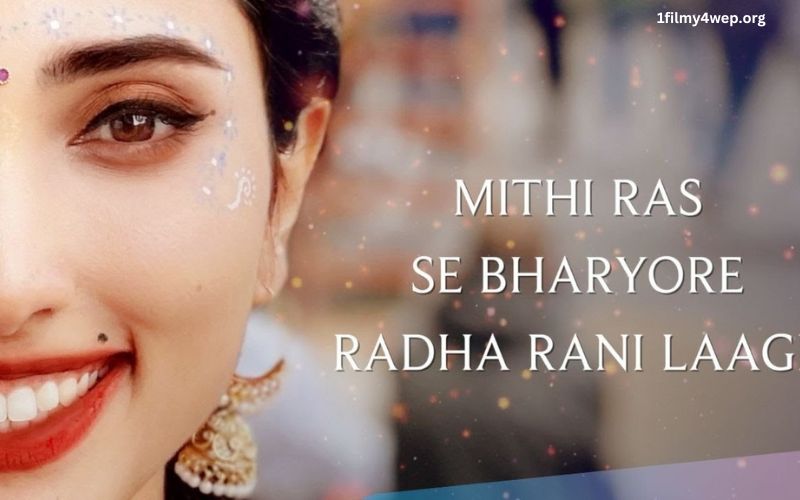(Mithe Ras Se Bharyo Radha Rani Lage) is a mesmerizing bhajan that has captured the hearts of countless devotees of Lord Krishna and Radha Rani. This devotional song, sung with deep fervor and reverence, beautifully encapsulates the divine love and devotion shared between Radha and Krishna, portraying Radha Rani as the epitome of grace, sweetness, and spiritual beauty.
Origins and Significance
Bhajans, which are devotional songs, hold a significant place in Indian culture and spirituality. They are a medium through which devotees express their love, devotion, and surrender to the divine. “Mithe Ras Se Bharyo Radha Rani Lage” is one such bhajan that has been cherished by devotees for generations. This song is sung during various religious ceremonies, especially during the festivals of Holi and Janmashtami, and in temples dedicated to Radha and Krishna.
The bhajan’s lyrics are imbued with poetic beauty, illustrating Radha Rani’s enchanting charm and the divine love she shares with Krishna. The phrase “मिठे रस से भरीयो” (mithe ras se bharyo) translates to “filled with sweet nectar,” signifying Radha’s divine essence and her role as the beloved of Krishna. The song celebrates Radha’s virtues and her unparalleled devotion, which make her an eternal symbol of divine love.
Musical Rendition and Popularity
The bhajan has been performed by various artists over the years, each bringing their unique style and interpretation to the song. Its melody is often composed in a traditional raga, which enhances its devotional and soothing appeal. The rhythm and flow of the music, combined with the heartfelt lyrics, create an atmosphere of spiritual ecstasy and devotion.
One of the most popular renditions of this bhajan is by the legendary singer Anup Jalota, whose soulful voice and emotive delivery have made this song a favorite among devotees. His rendition captures the essence of the bhajan, making it a staple in many devotional gatherings and events.
The bhajan’s popularity is not limited to India; it has a significant following among the Indian diaspora worldwide. It is often played in temples, during religious festivals, and in homes where devotees gather for satsangs (devotional gatherings). The universal appeal of this bhajan lies in its ability to convey the profound love and devotion that Radha and Krishna share, transcending cultural and linguistic boundaries.
Cultural and Spiritual Impact
Is more than just a song; it is a spiritual experience that brings devotees closer to the divine love of Radha and Krishna. The bhajan serves as a reminder of the purity and selflessness of Radha’s devotion, inspiring devotees to cultivate a similar sense of love and surrender in their own spiritual journeys.
Radha Rani, often regarded as the supreme goddess in the Vaishnavite tradition, embodies the highest form of bhakti (devotion). Her love for Krishna is not bound by worldly constraints but is a manifestation of pure, unconditional love. Through this bhajan, devotees are encouraged to emulate Radha’s unwavering devotion and to seek a deeper, more meaningful connection with the divine.
The song also highlights the cultural significance of Radha and Krishna in Indian mythology and religious practices. Their love story is not just a tale of romance but a profound allegory for the soul’s yearning for union with the divine. Radha’s dedication to Krishna represents the ideal of spiritual devotion, where the devotee’s love for God transcends all material desires and attachments.
Interpretations and Symbolism
The imagery in is rich with symbolic meaning. The “sweet nectar” that fills Radha Rani can be interpreted as the divine love and bliss that she embodies. This sweetness is not merely physical but is a spiritual quality that makes Radha the ideal devotee and beloved of Krishna.
The color “Shyam” (dark blue) in which Radha is depicted as being dyed symbolizes Krishna himself. In Hindu iconography, Krishna’s dark blue complexion is often associated with the infinite sky and the deep, boundless ocean, representing his vastness and omnipresence. By being “dyed” in Krishna’s color, Radha is shown to be completely immersed in his essence, indicating the depth of her devotion and the complete merging of her identity with Krishna’s.
Conclusion
Is a timeless bhajan that continues to inspire and uplift devotees around the world. Its lyrical beauty, profound meaning, and soulful melody make it a cherished part of the devotional music tradition. Through this bhajan, the divine love of Radha and Krishna is celebrated, reminding us of the power of pure, selfless devotion.
For devotees, singing or listening to this bhajan is not just an act of worship but a way to connect with the divine and to experience the spiritual bliss that Radha embodies. It is a reminder that true devotion transcends the physical realm and touches the very essence of the divine. As the song reverberates in the hearts of devotees, it brings them closer to the eternal love and devotion that Radha Rani represents, filling their lives with the sweet nectar of divine grace.


Great blog! Do you have any tips and hints for aspiring writers? I’m planning to start my own website soon but I’m a little lost on everything. Would you propose starting with a free platform like WordPress or go for a paid option? There are so many choices out there that I’m totally confused .. Any ideas? Bless you!